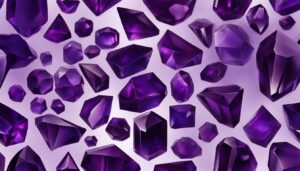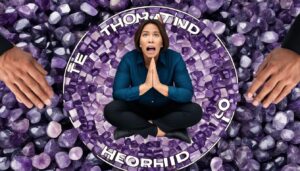Many people are fascinated by the mystique and symbolism of tarot cards. Whether used for divination, meditation, or self-reflection, tarot cards have been a tool for unlocking the mysteries of the subconscious and tapping into the universal energies that surround us. Throughout history, these enigmatic cards have been shrouded in mythology and folklore, and their purpose and uses have evolved over time.
The History of Tarot Cards
The origins of tarot cards are surrounded by speculation and mystery. Some historians believe that the tarot originated in ancient Egypt or Asia, while others point to the Italian Renaissance as its birthplace. The earliest known tarot cards date back to the 15th century in Europe, where they were used for playing card games. However, it was not until the 18th century that the tarot began to be associated with divination and the occult.
Over the centuries, the symbolism and imagery of the tarot have been heavily influenced by various cultures and spiritual traditions. The 78 cards in a typical tarot deck are divided into two main categories: the Major Arcana and the Minor Arcana. The Major Arcana consists of 22 cards that represent major life themes and spiritual lessons, while the Minor Arcana consists of 56 cards that reflect everyday experiences and situations.
The Purpose of Tarot Cards
At its core, tarot is a tool for self-reflection and introspection. The cards can help individuals gain insight into their thoughts, emotions, and behaviors, as well as the potential outcomes of their actions. Tarot readings can provide valuable guidance, perspective, and clarity, allowing people to make more informed decisions and navigate life’s challenges with confidence.
Additionally, tarot can be used as a spiritual or meditative practice. The act of shuffling the cards, choosing and laying them out, and interpreting their meanings can be a form of ritual and mindfulness. Many people use tarot as a way to connect with their intuition, higher self, or spiritual guides.
Divination and Tarot Readings
One of the most popular uses of tarot cards is for divination, or fortune-telling. During a tarot reading, the reader will shuffle the cards and lay them out in a specific pattern, or spread, based on the querent’s question or situation. The reader then interprets the cards’ meanings and their relationships to each other to provide insight or predictions about the querent’s life.
It’s important to note that tarot readings are not set in stone, and the future is not predetermined. The cards’ messages are meant to be interpreted as guidance or advice, rather than absolute predictions. The outcome of a reading ultimately depends on the choices and actions of the individual.
Modern Uses of Tarot Cards
In recent years, tarot has experienced a resurgence in popularity, thanks in part to social media, where tarot readers share their wisdom and insights with a global audience. Many people turn to tarot as a form of self-care and empowerment, using the cards to seek clarity and understanding in their personal and professional lives.
Some individuals also use tarot cards for creative and artistic purposes. Artists and writers may draw inspiration from the cards’ imagery and symbolism, incorporating them into their work or using them as a catalyst for brainstorming and storytelling.
Furthermore, tarot has found its way into alternative and holistic healing practices. Some therapists and counselors use tarot as a therapeutic tool to help clients explore their feelings, gain insight into their challenges, and set goals for personal growth.
Ultimately, the purpose and uses of tarot cards are as diverse and varied as the individuals who engage with them. Whether seeking guidance, self-discovery, or creative inspiration, tarot holds a timeless appeal as a tool for unlocking the mysteries of the human experience.
History and Origins of Tarot Cards
The history of tarot cards is rich and varied, with its origins dating back to the 14th century in Europe. While the precise origins of tarot cards are debated, it is commonly believed that they were originally used as playing cards in Italy. However, over time, they evolved into a tool for divination and spiritual guidance. The first known tarot deck was created in the mid-15th century in Italy, known as the Visconti-Sforza deck. Since then, tarot cards have continued to be used for a wide range of purposes, from fortune-telling to self-reflection and personal development.
The Structure and Symbolism of Tarot Decks
Each tarot deck typically consists of 78 cards, which are divided into two main groups: the Major Arcana and the Minor Arcana. The Major Arcana consists of 22 cards, each of which represents a significant life lesson or event. These cards are often seen as the core of the tarot deck, offering deep insights into the inner workings of the human psyche. On the other hand, the Minor Arcana consists of 56 cards, which are further divided into four suits: Cups, Pentacles, Swords, and Wands. Each suit represents a different aspect of life, such as emotions, material wealth, mental challenges, and creativity. Together, these cards provide a comprehensive overview of the human experience and the challenges we face.
Unlocking the Mysteries of Tarot
The purpose of tarot cards is to provide guidance, insight, and clarity on various aspects of life, including relationships, career, personal growth, and spirituality. By consulting the cards, individuals can gain a deeper understanding of their current circumstances and the potential outcomes of their choices. Tarot readings can also serve as a powerful tool for self-reflection, helping individuals explore their subconscious thoughts and emotions. Additionally, tarot cards can be used to uncover hidden truths and gain a fresh perspective on complex situations. Ultimately, the purpose of tarot is to empower individuals to make informed decisions and navigate life’s challenges with greater wisdom and insight.
Modern Uses of Tarot Cards
In recent years, tarot cards have experienced a resurgence in popularity, with many people turning to them for spiritual guidance and self-discovery. Tarot readings are often sought out for specific questions or concerns, such as love and relationships, career decisions, and personal development. In addition to one-on-one readings, tarot cards are also used in group settings, such as workshops and retreats, to facilitate deeper connections and personal growth. Furthermore, many individuals have embraced tarot cards as a form of creative expression, using them in art and storytelling to explore their own creativity and intuition. Overall, the modern uses of tarot cards extend far beyond traditional divination, offering a multifaceted approach to self-exploration and spiritual growth.
Understanding the Symbolism
One of the key aspects of using tarot cards is understanding the symbolism that each card holds. Each card in the tarot deck is rich in symbolic imagery that holds deeper meanings and insights into various aspects of life. For example, the Major Arcana cards represent significant life events and spiritual lessons, while the Minor Arcana cards focus on day-to-day experiences and challenges. Understanding the symbolism of each card is essential for interpreting the messages and insights that the tarot can provide. This involves studying the traditional meanings of the cards as well as developing an intuitive understanding of how the symbols resonate with the individual reader.
Using Tarot for Personal Growth
Tarot cards can be a powerful tool for personal growth and introspection. By using the cards to tap into our inner wisdom and intuition, we can gain valuable insights into our thoughts, emotions, and behaviors. Through self-reflection and meditation on the messages of the cards, we can uncover patterns, obstacles, and opportunities in our lives. Tarot can also be used as a tool for setting intentions and goals, as well as for gaining clarity and guidance during challenging times. Many people find that the act of pulling tarot cards and examining their meanings provides a sense of empowerment and direction in their lives.
Using Tarot for Divination
One of the most well-known uses of tarot cards is for divination, or the practice of seeking insights into the future. While tarot should not be used as a fortune-telling tool, it can be used to gain a deeper understanding of the energies and potential outcomes surrounding a particular situation. Tarot readings can provide guidance on important decisions, relationships, career paths, and other areas of life. The insights gained from a tarot reading can help individuals to make informed choices and navigate through life’s challenges with a sense of clarity and purpose. It is important to approach tarot readings with an open mind and a willingness to use the insights gained as a tool for personal empowerment.
Respecting the Tarot Tradition
As with any practice steeped in symbolism and esoteric knowledge, it is essential to approach tarot with respect and reverence for its traditions. While there are countless tarot decks available today, each with its own unique imagery and interpretations, it is important to honor the centuries-old traditions from which the tarot originated. This includes studying the history and symbolism of the tarot, as well as aligning with one’s own spiritual or philosophical beliefs when working with the cards. Respecting the tarot tradition also involves using the cards with integrity and ethical consideration, such as obtaining consent from the querent before conducting a reading and upholding confidentiality regarding the insights gained.
Conclusion
In conclusion, tarot cards have a long history as tools for spiritual and personal growth, as well as for seeking insight and guidance. By understanding the symbolism of the cards, using them for personal growth, using them for divination, and respecting the tarot tradition, individuals can unlock the mysteries and harness the power of the tarot in their lives. Whether used as a tool for self-reflection, decision-making, or connecting with higher guidance, tarot cards continue to serve as a valuable resource for those seeking to gain deeper understanding and insight into their lives. As with any spiritual practice, it is important to approach tarot with reverence and integrity, honoring its traditions and using its insights as a means for personal empowerment and growth.



